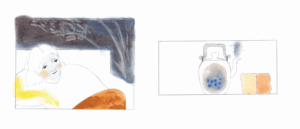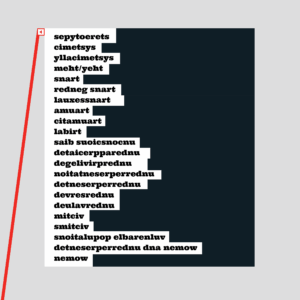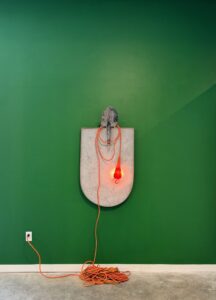This work from 2021 is a 12-minute stop-motion animation that subverts and reframes the visual presentation of modern American myth-making. Walker’s cut-paper silhouettes reenact several of the most gruesome and infamous acts of white supremacist violence in the country’s recent history, including the 1995 Oklahoma City bombing by Timothy McVeigh and the 1998 murder of...
This work from 2021 is a 12-minute stop-motion animation that subverts and reframes the visual presentation of modern American myth-making. Walker’s cut-paper silhouettes reenact several of the most gruesome and infamous acts of white supremacist violence in the country’s recent history, including the 1995 Oklahoma City bombing by Timothy McVeigh and the 1998 murder of James Byrd Jr. Inspired by the saturation of white supremacist rhetoric within the mainstream political discourse of the past five years, the film’s creation is prescient in relation to the January 6, 2020 insurrection on the US capitol. Prince McVeigh and the Turner Blasphemies is an unflinching interrogation of how radical figures and ideologies ingratiate themselves within the national consciousness.
Works in this exhibition contain strong imagery and content that may not be suitable for all viewers.
New York-based artist Kara Walker is best known for her candid investigation of race, gender, sexuality, and violence through silhouetted figures that have appeared in numerous exhibitions worldwide. Born in Stockton, California in 1969, Walker was raised in Atlanta, Georgia from the age of 13. She studied at the Atlanta College of Art (BFA, 1991) and the Rhode Island School of Design (MFA, 1994). She is the recipient of many awards, notably the John D. and Catherine T. MacArthur Foundation Achievement Award in 1997 and the United States Artists, Eileen Harris Norton Fellowship in 2008. In 2012, Walker became a member of the American Academy of Arts and Letters. In 2015, she was named the Tepper Chair in Visual Arts at the Mason Gross School of the Arts at Rutgers University. Her work can be found in museums and public collections throughout the United States and Europe including The Solomon R. Guggenheim Museum, New York; The Museum of Modern Art, New York; The Metropolitan Museum of Art, New York; The Tate Gallery, London; the Museo Nazionale delle Arti del XXI Secolo (MAXXI), Rome; and Deutsche Bank, Frankfurt.






